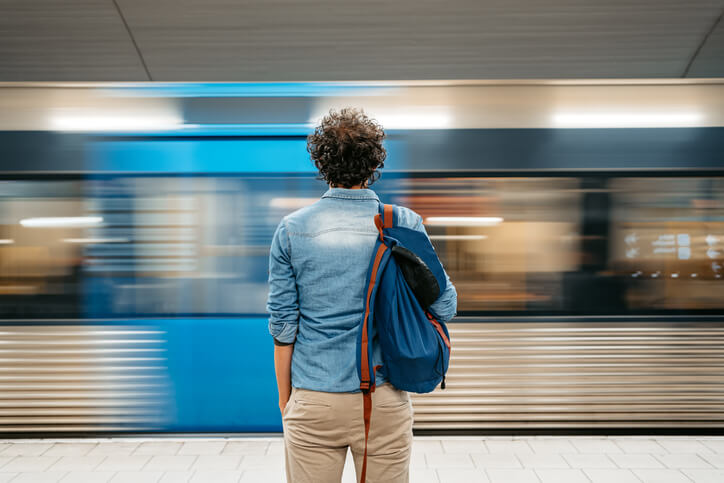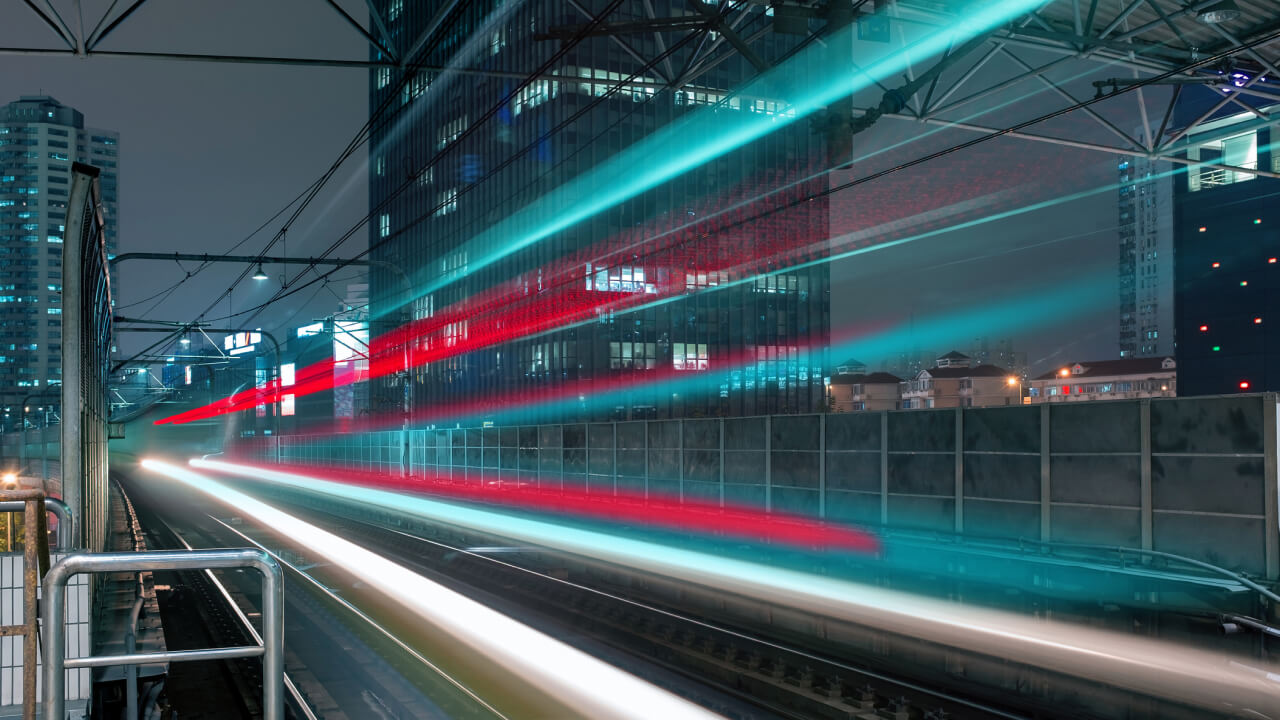Benefits and state of the art of rail systems in urban planning
Quick developments in global urbanization, population growth, and the need for environmental action have raised several conversations on the topic of mobility. When it comes to imagining (or reimagining) the future, transportation plays a crucial role, and the challenges of today must be faced and tackled for a smart, efficient, and sustainable tomorrow.
Increasing traffic congestions, pollution, and limited resources are making traditional modes of transportation ever more unsustainable. Now, at a critical point in history, finding solutions is paramount for governments, engineers, urban planners, communities, and commuters all around the world.
Mass transit is an often-proposed solution to avoid many of the troubles caused by private car mobility. However, the worldwide mobility by mode of transportation split sits currently at:

Many reasons amount to the preference of cars over public transportation. Convenience, safety concerns, accessibility, and car-centric city planning are among the most common.
This, however, does not mean adoption is unthinkable. In fact, latest insights indicate that the mobility system worldwide is about to enter a decade of transformation unlike anything we’ve seen since the introduction of the automobile. One of the deciding factors for this transition is the decline in use of the private car. A result from not only government regulations to ease congestions and pollution, but also from consumers themselves, who are seeking alternatives for environmentally friendly and convenient transportation.
Here is where rail comes into play.

Rail transportation, be it trains, subway/metro systems, light rails or tram/trolleys are proven reliable transportation methods for many people in cities. Rail systems connect cities fast and efficiently, making urban areas more accessible, boosting economic activity across areas that would otherwise be difficult to transit to and from.
Rail systems, as they stand today, present many benefits among which we’ll name a few:
- Capacity and efficiency: As we mentioned, rail transit connects cities efficiently. By design, rail systems have the potential to move a large amount of people, avoiding traffic and moving at higher speeds than would be the norm on roads. Depending on the city’s infrastructure, rail transit hast the potential to move with high frequency between trains, creating an efficient schedule for all commuters… which brings us to our next point.
- Reliability: Rail systems are less susceptible to traffic congestions or weather-related disruptions, which provides the potential to operate on fixed schedules. This creates predictable travel times, allowing for commuters to plan ahead confidently and move between destinations reliably.
- Reduced traffic congestions: Offering alternatives to road-based transportation has been proven to reduce traffic congestion in urban areas. This becomes a beneficial cycle, as it promotes the continuous betterment of alternative systems, while improving the transit experience for road-based vehicles.
- Reduced environmental impact and increased energy efficiency: Rail transit generally produces less emissions per passenger mile than private cars. In addition, the large number of passengers carried by rail transit results in more energy efficiency than that of private cars. The increasing implementation of electric-powered trains opens up possibilities for renewable energy incorporation, creating an even more environmentally friendly method of transportation.
- Ease of infrastructure maintenance: Once established, rail systems have lower maintenance costs and are less frequent compared to road systems. Rail tracks have longer lifespans and require less repairs over time, becoming a more sustainable long-term option for urban planners.
- Urban Development and Land Use: Rail transit can influence urban development patterns, encouraging higher-density and mixed-use development around transit stations. This can lead to more walkable and bike-friendly neighborhoods, reducing the need for long commutes and supporting local economies while opening possibilities for micromobility innovation too.
- Accessibility: Rail transit can be designed to accommodate people with disabilities, providing a more inclusive mode of transportation. Stations can be equipped with ramps, elevators, and other facilities to make them accessible to all individuals. While many cities still need to develop an accessibility plan for their systems, the possibilities are open, and rail transit offers a relatively simple implementation of them.
- Economic Stimulus: The construction and operation of rail transit systems can stimulate economic growth by creating jobs in various sectors, including construction, operations, maintenance, and retail around transit stations. The simplified connection between areas encourages people to move around the city and visit new places, shops, and businesses that would otherwise be hard to reach.
The success of rail transit in a city depends on many things such as proper planning, friendly design, integration with other modes of transportation, and proper maintenance. Of course, not all cities are created equal, and while some may be quicker to adopt rail as an alternative for public transit, others might need to explore different areas of urban planning before getting there. However, rail systems efficiency, reliability, sustainability, and possibilities for greener innovation make it a tried-and-true method of transportation that is well adopted by commuters and can boost cities in many ways.






